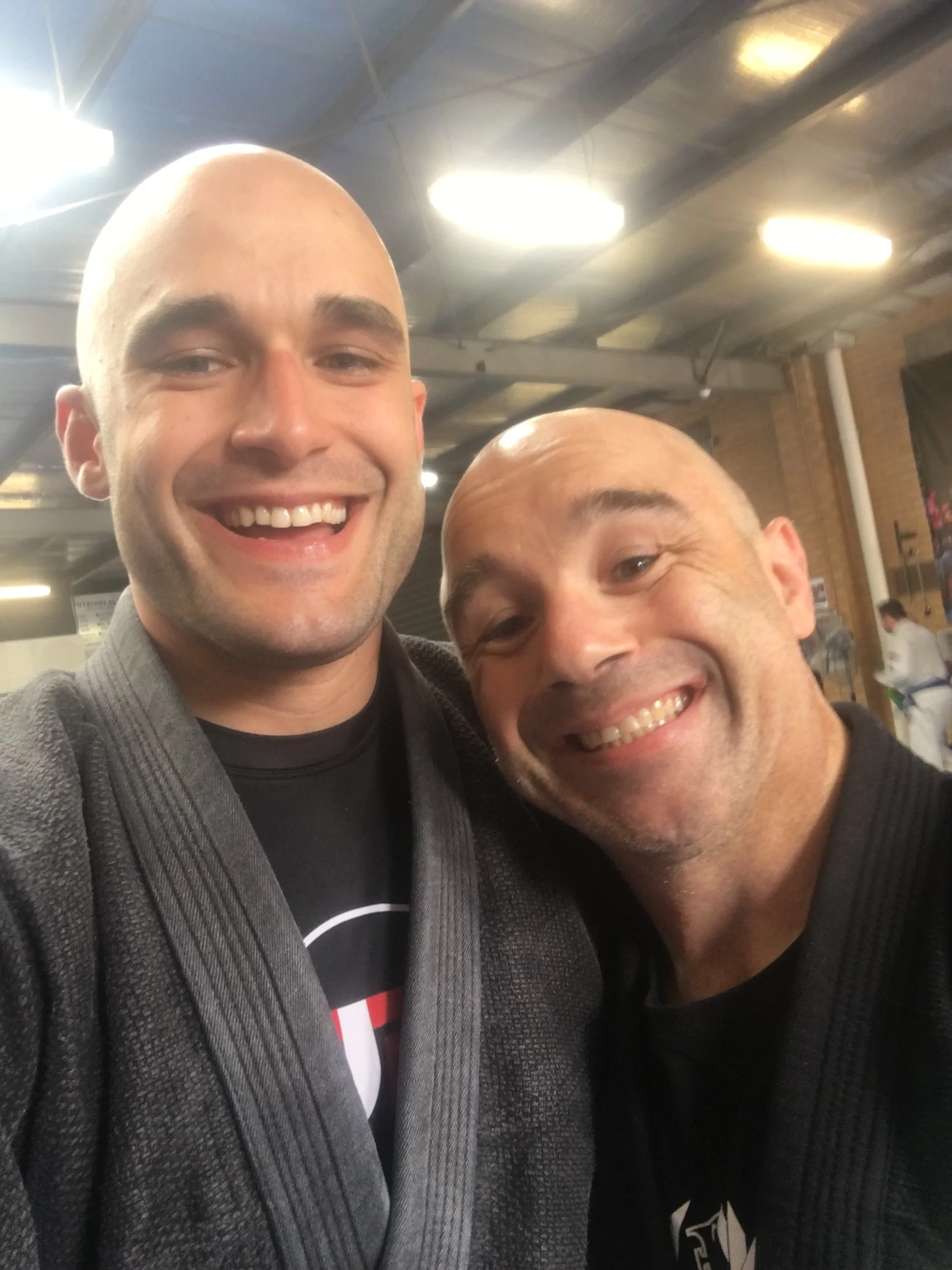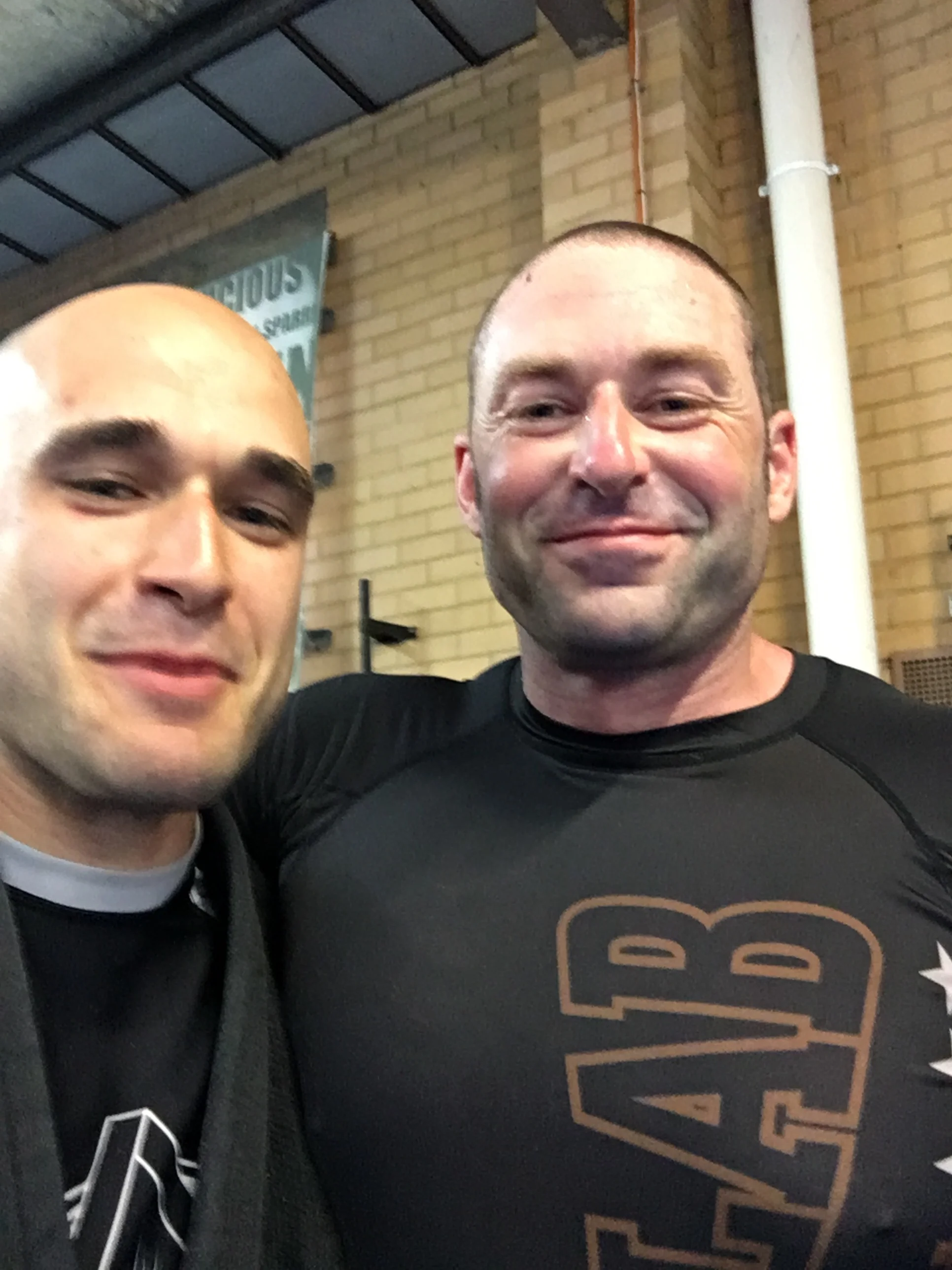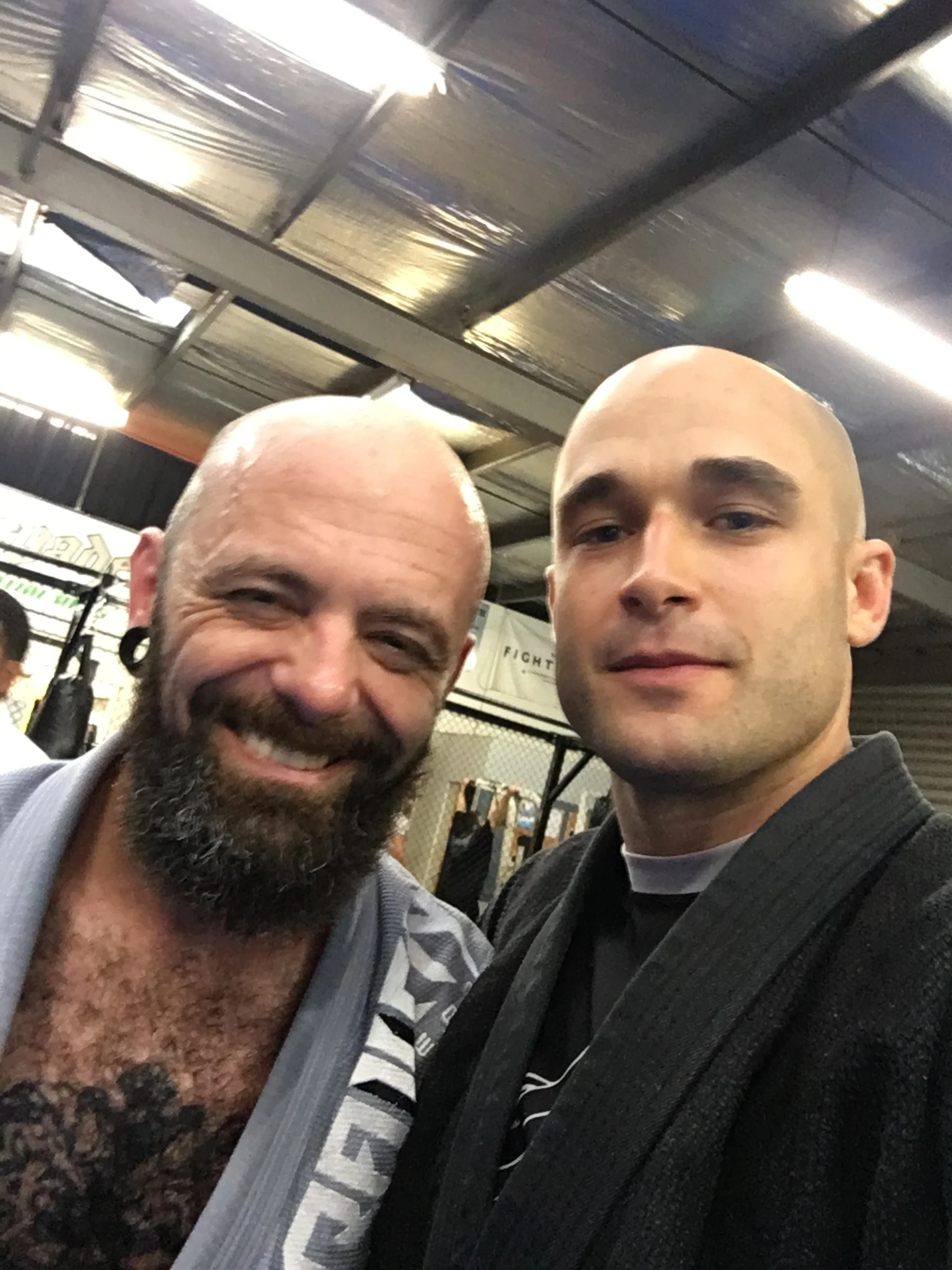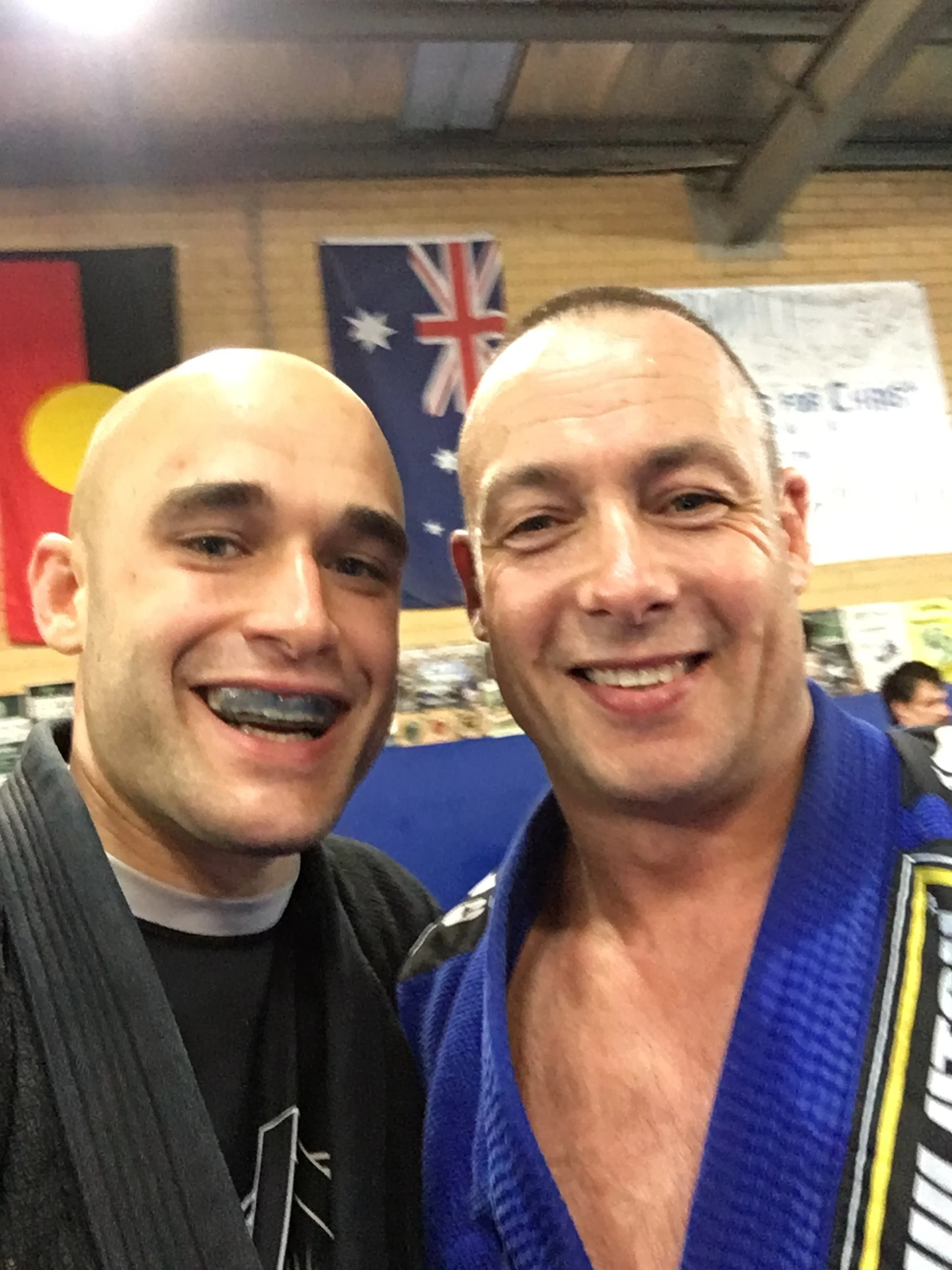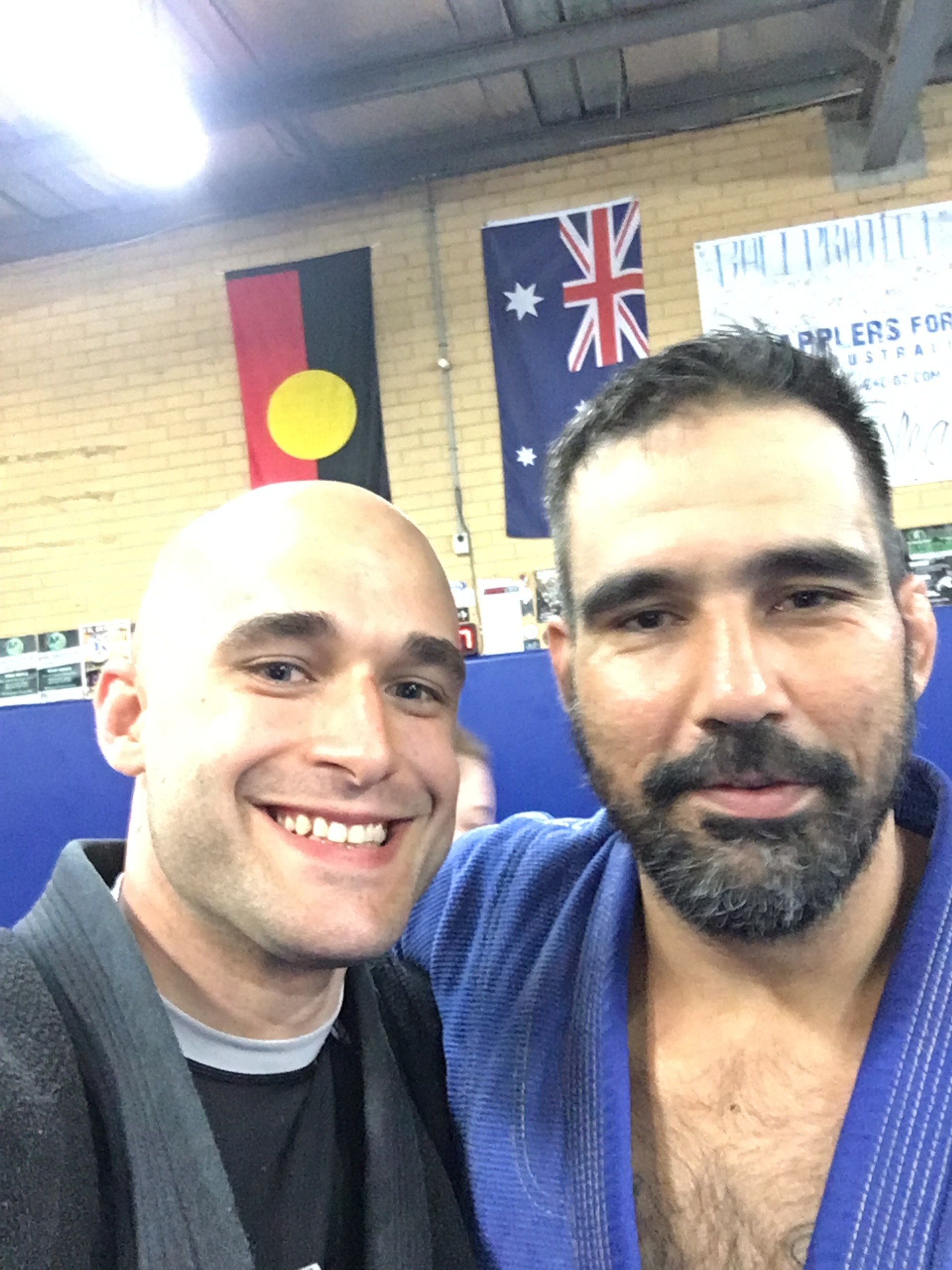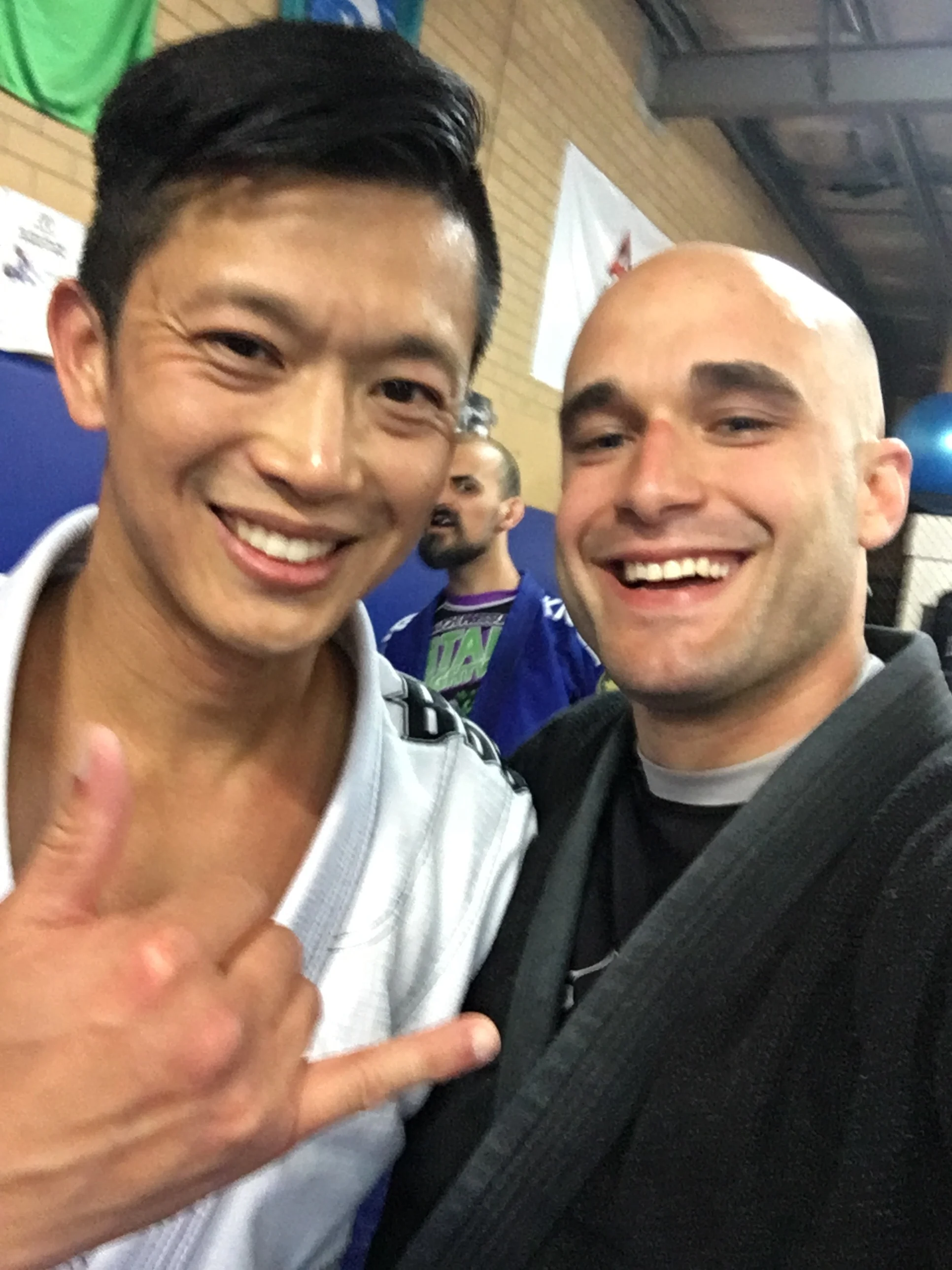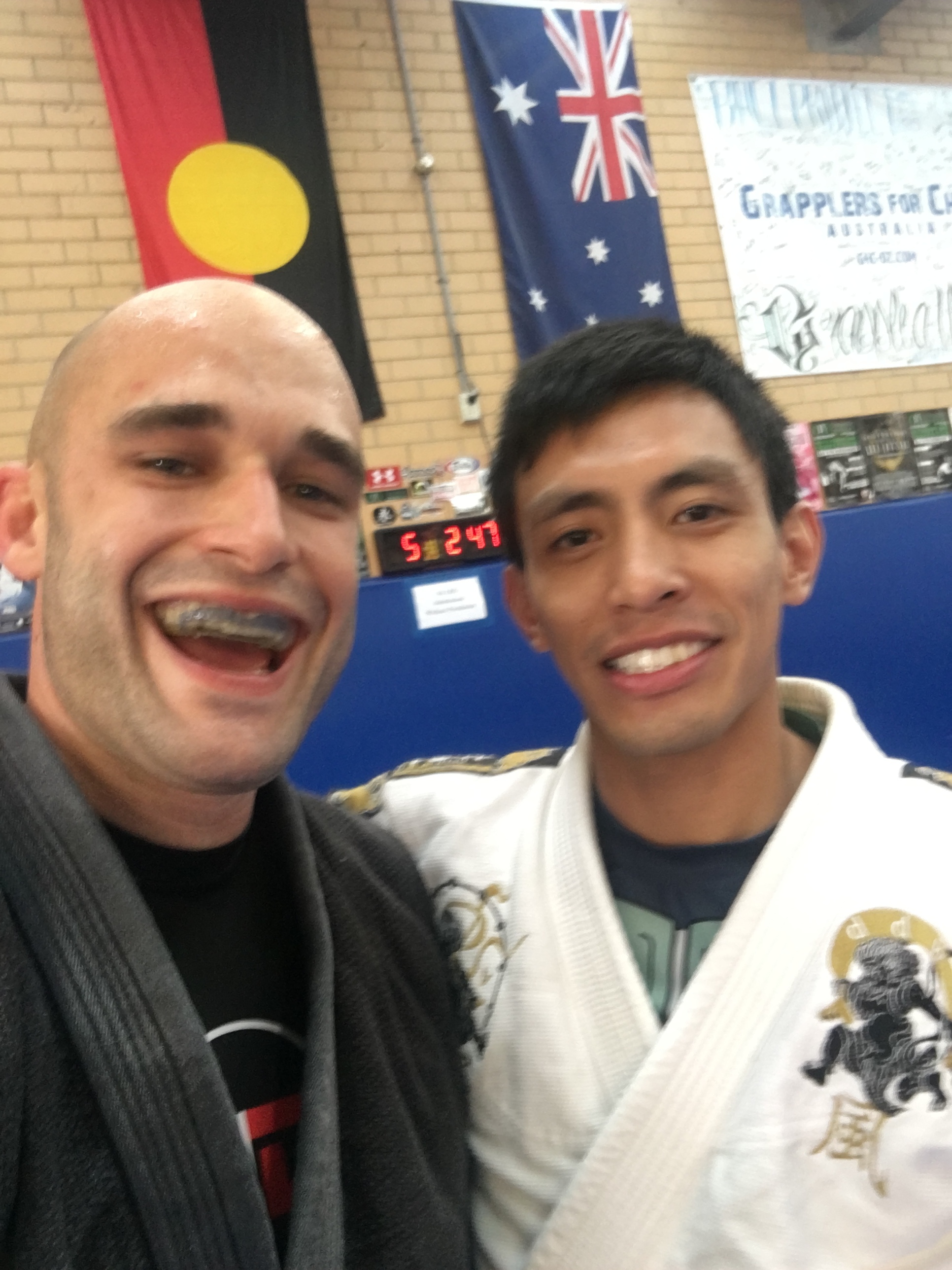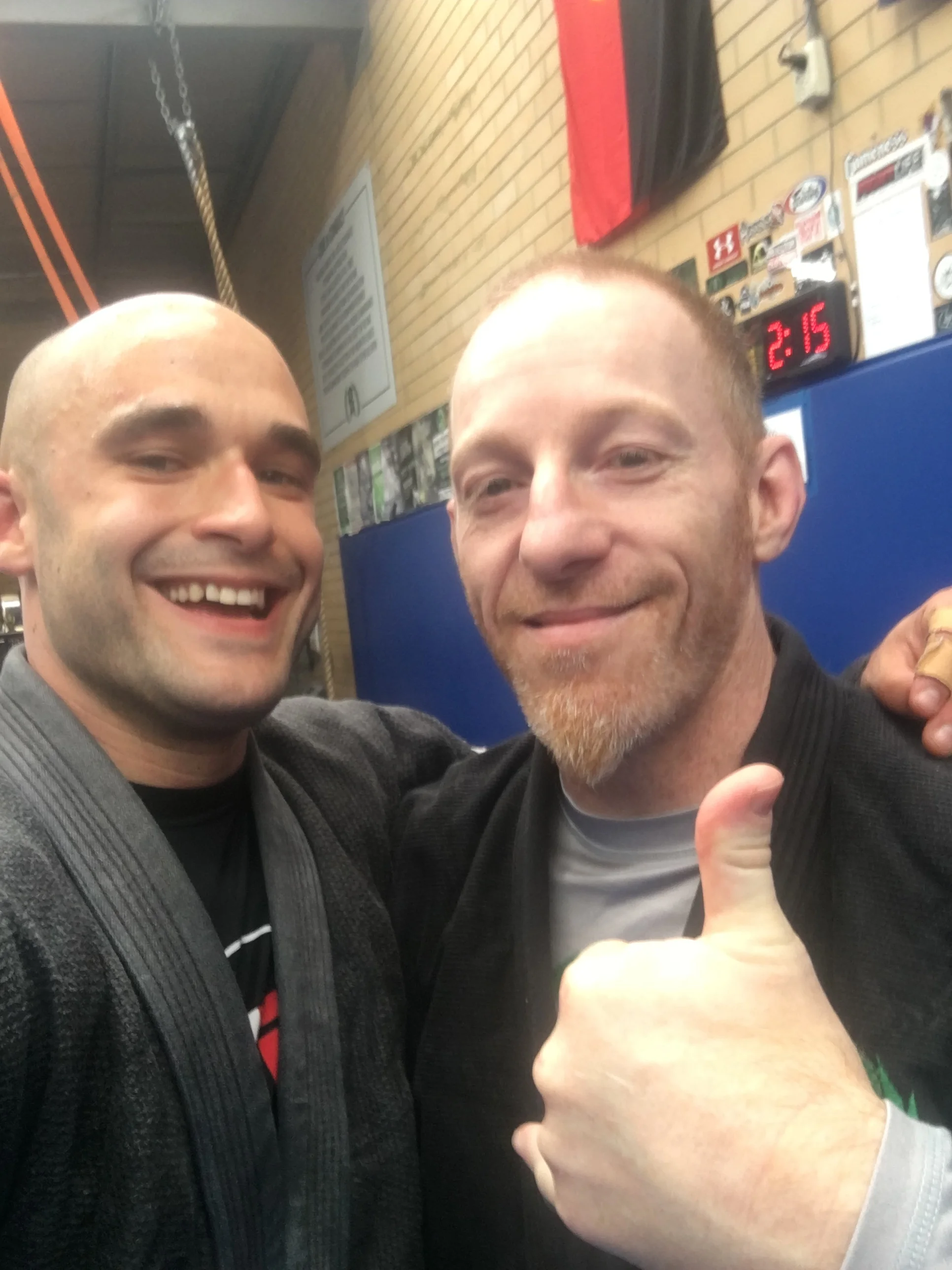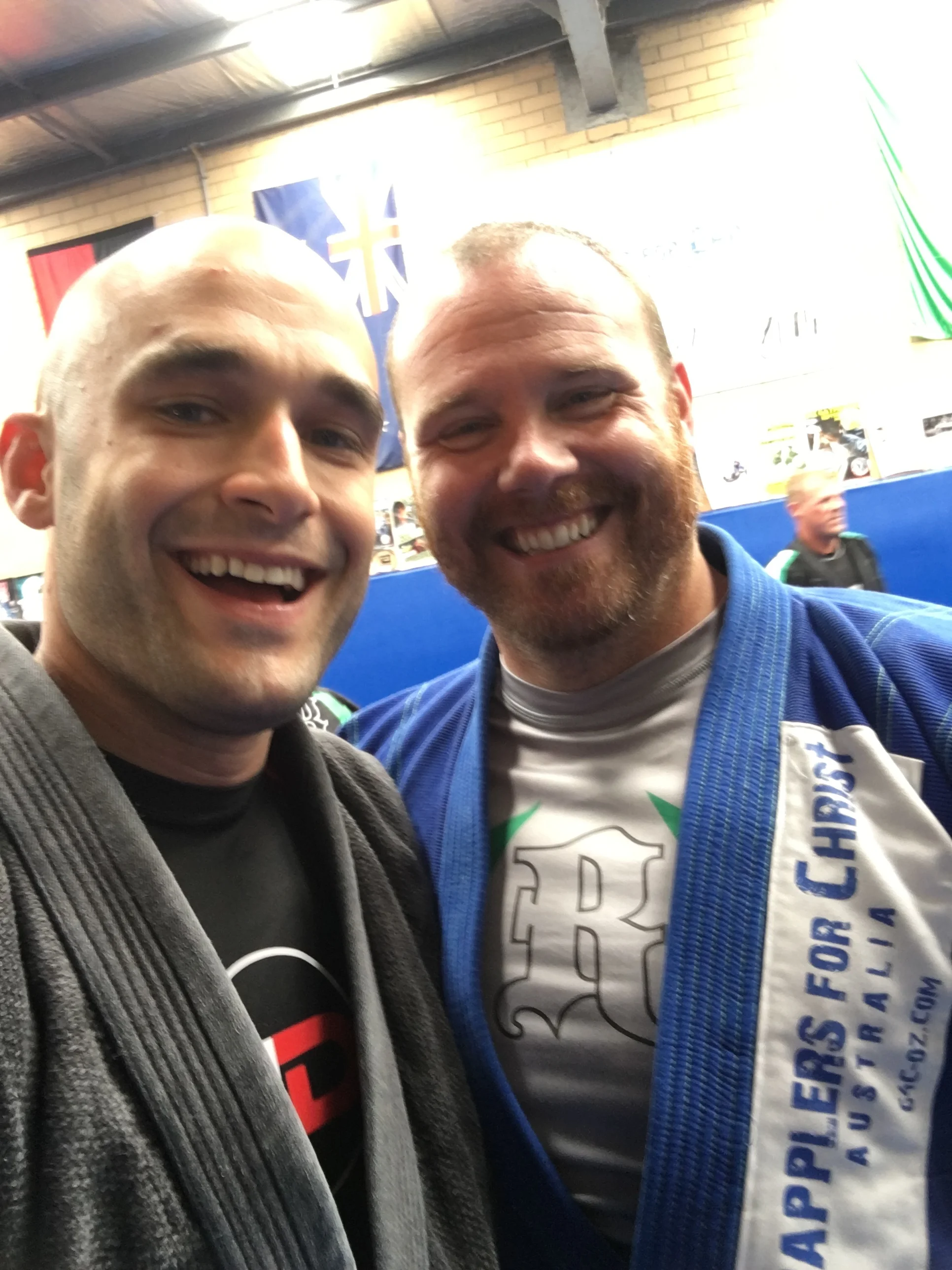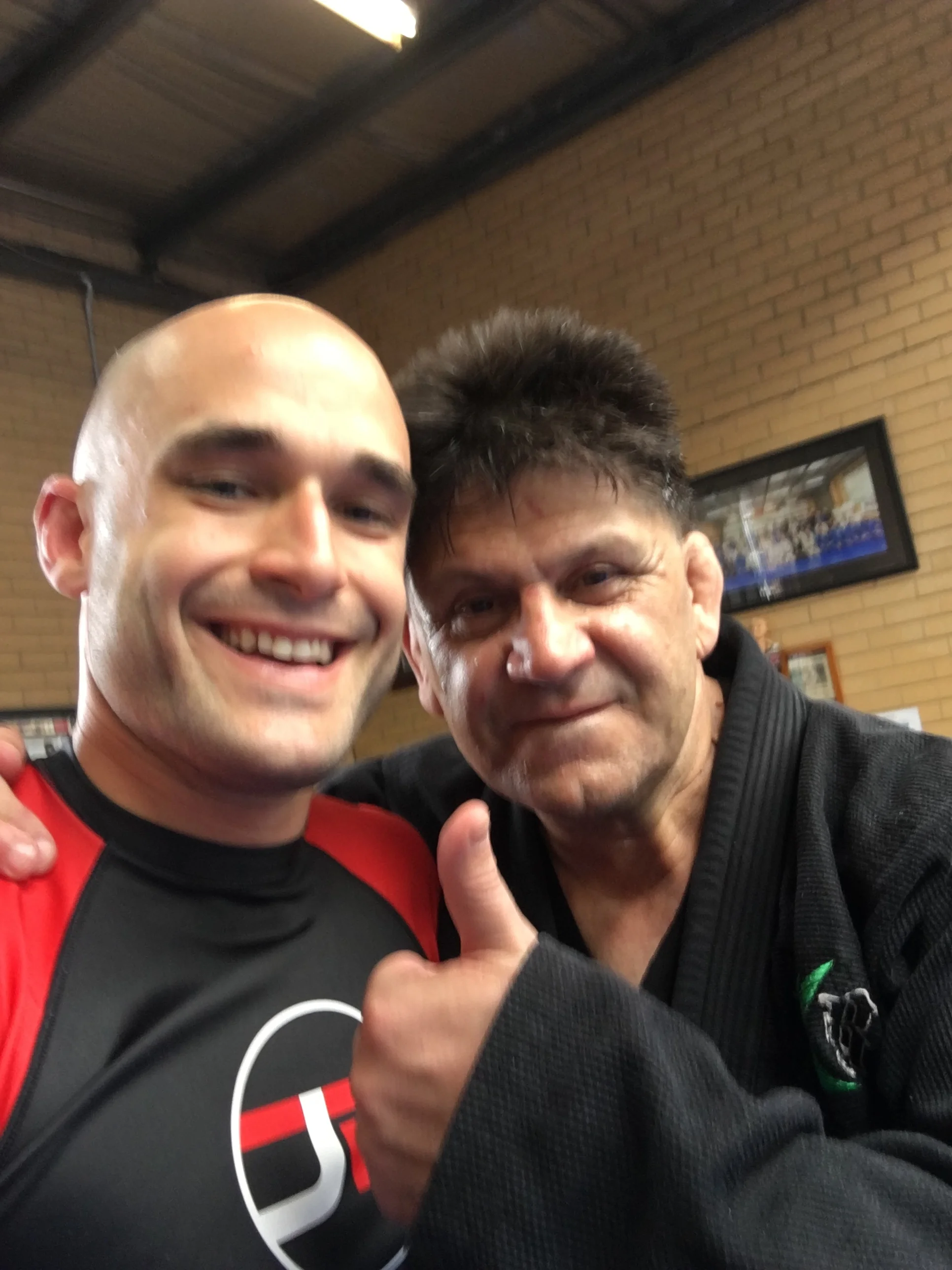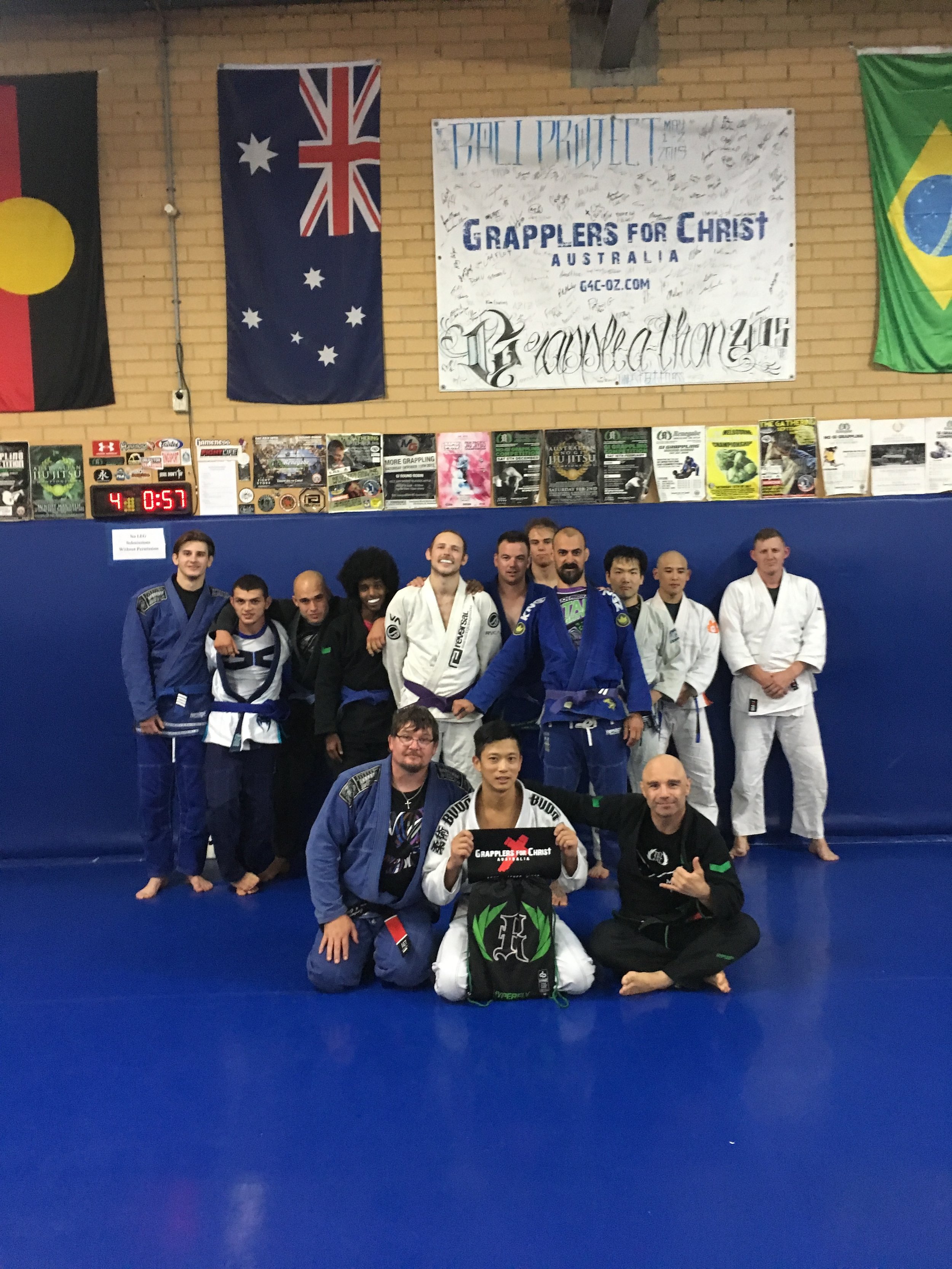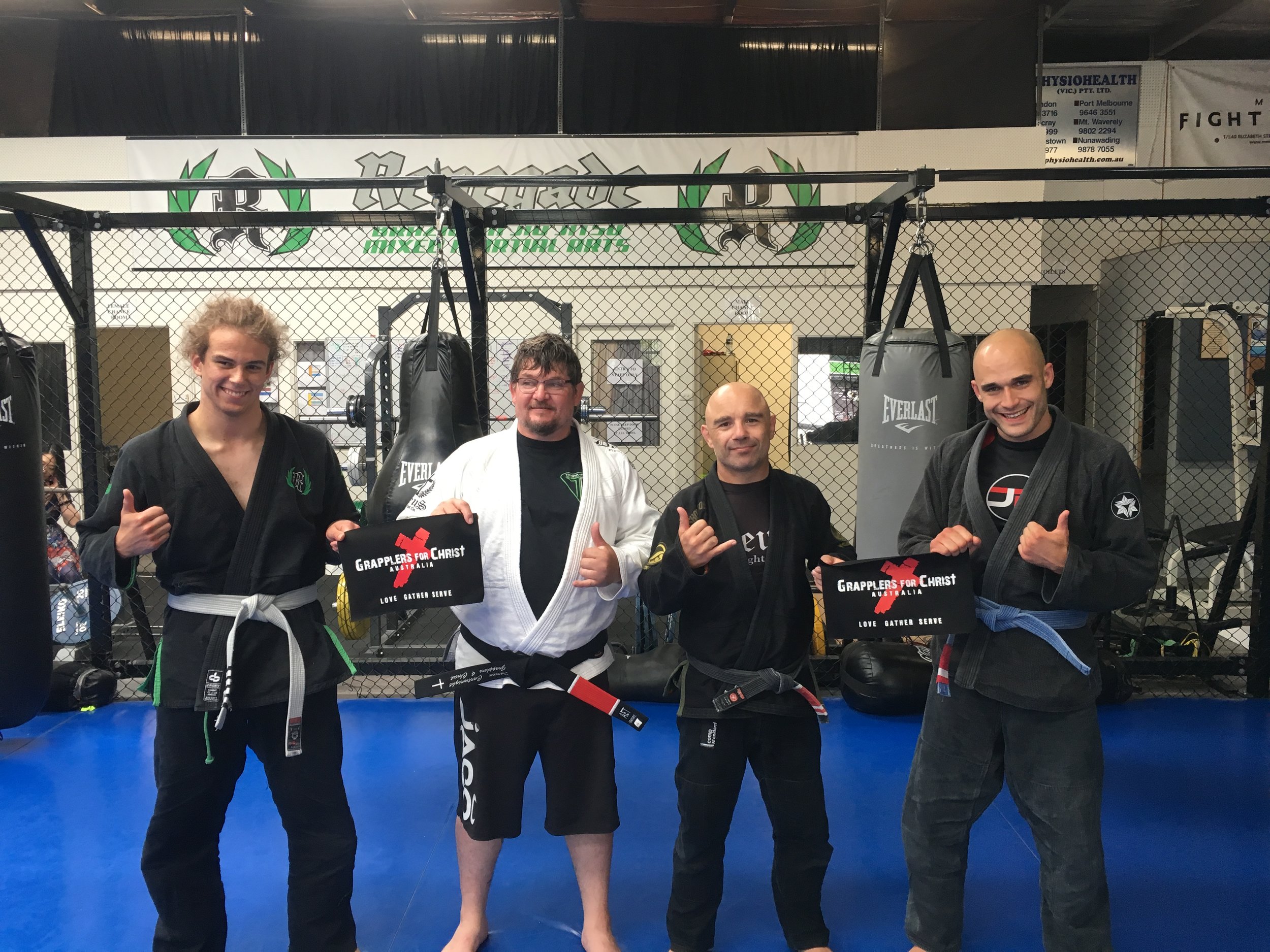What I Learnt Grappling for 24 Hours Straight
I have just completed a 24 hour Grapple-A-Thon, which is 24 hours of continuous Brazilian Jiu Jitsu (BJJ) and I want to share the lessons that I have learnt from this experience.
Grapple-A-Thon specifics: An annual charity fundraiser event by Renegade MMA (Kensington).
Over the 24 hours, there were 15 one hour long lessons, each consisting of 15 minutes of instruction, 30 minutes of drilling and 15 minutes of positional grappling. The remaining time was an open mat for free training. With eating and toilet breaks accounted for, this equates to approximately 3.75 hours of instruction, 7.5 hours of drilling, and 11.5 hours of rolling, with 30 minutes of yoga stretching at the end!
I had the pleasure of receiving instruction from some very high level practitioners, as well as the privilege of rolling with literally hundreds of people of all ranks, ages, weights and styles.
Suffice to say I learnt a lot!
I have broken this blog post into the following sections:
1: the overall takeaways from my experience
2: the BJJ specific takeaways
3: mind frame
4: nutrition and recovery
5: unexpected challenges
I want to say a massive thank you to all of the coaches for donating their time. You all offered a unique and knowledgeable perspective into BJJ, and I have taken something from each session. I have placed pictures of all the coaches throughout this piece, with a summary of the main techniques and principles that they covered (what I took from their lessons at least).
I also want to thank Renegade MMA for hosting the event, they raised $2800 on the night for Akademi Kristus, a project to help Indonesian youth through martial arts, education and creative arts - please consider supporting them.
Finally I want to thank my coach John Donehue and all the people at John Donehue Jiu Jitsu & MMA for pushing me to a level that enabled me to even consider attempting something like this!
Jamie Murray (3pm)
Techniques: Deep Half Sweep to "Dog Fight" with sweeping options
Principles: When sweeping, take away supporting posts
Josh Tutton (5pm)
Techniques: Judo Throw, Knee Pressure Foot Sweep
Principles: Don't play "Consensual BJJ" Make people play your game
Deon Perkins (6:30pm)
Techniques: Entries to the Truck from turtle, Crucifix position & "Pocket Watch Choke"
Principles: Tight thighs improve everything
1: General Takeaways
a) Be prepared
Before attempting an prolonged period of exercise, do your research. Look into the kind of preparation needed, prior training, correct nutrition, recovery plan and transport to and from the event.
I will go into the specifics later, but if I had my time again, I would have made some significant changes.
b) Know your why
Without a reason why, pressure will break you. Your body will only perform for so long, before it goes into self-preservation mode. Fatigue will set in, and you will break. Unless you have a deep, core reason for continuing, you won’t. Before you start, really work out why you want to do it.
For me, I have been wanting to do a 24hr martial arts session since I first began training at karate at 6 years old. Along with the 100 man Kumite (fighting 100 people successively), the guys in the gym talked about the 24 hour session in awe. A truly physical, mental and spiritual challenge.
Thus my quest began. I never thought I would have the opportunity to really do it, so I jumped on the opportunity when I discovered the Grapple-A-Thon. Throughout the night, I drew on this lifelong goal to push my body beyond its limits.
c) Expect doubters
Most people will never attempt a marathon event, thus doing so is a concept outside of their current reality. With the best of intentions, these people will express their concerns, doubts, or alternative activities for you to do.
Don’t listen to them. There is a reason that you are attempting this challenge, remember and focus on that. Trust yourself, trust your preparation, and trust your coaches. Surround yourself with people who support your goals, and who you trust to give you honest advice (these people know you well enough to know what you are capable of). Finally, read the stories of people who have come before you (or at least completed something similar). I found these subreddits to be informative and inspirational: r/firstmarathon, r/Marathon, r/Ultramarathon
Remember: you are only crazy until you succeed, then you become inspirational!
Dave Stocks (8pm)
Techniques: Side control specifics, "Elbow Ride", Bread Cutter Choke
Principles: Bait them to move, with pressure & patience
Dave 'mini' Marinakas (9:30pm)
Techniques: kNEE tHROUGH pRESSURE pASSINg & keeping their other leg "zoned out"
Principles: Keep the knees pointed where you want them to go & If all the parts in place, the technique will work
Thiago Stefanutti (11pm)
Techniques: Omoplata with three set up variations from guard (SCISSOR sweep, "high kick", & Spider guard), & counters to defences of omoplata
Principles: break posture, chain attacks & have counters ready
2: BJJ Takeaways
a) Fundamentals win the day
As the day progressed my strength and explosiveness waned, and I was less and less able to perform the more intricate or complicated moves that I am typically able to do.
After a few hours, I was unable to perform any technique that I had acquired in the past 6 months. Under that pressure, it just wasn’t there anymore – or I just couldn’t pull it off.
My game became VERY basic.
I attempted to secure top position, maintain a good base so I couldn’t be easily swept, attack their arms for vlocks/arm bars and transition to the back whenever possible.
On the bottom I aimed to protect myself, disrupt their posture and base, prevent passing and when they did pass, defend and look for an opening.
Since I had no strength, I couldn’t “muscle” my way out of anything. All that worked was good technique, properly applied. Suffice to say, I learnt that I was using more strength than I thought I was. This was highlighted in the free rolling sessions held in the last few hours – 50 kg women were able to out muscle me, smash past my guard and dominate me with their superior strength. This was eye-opening to me, as I have never been in such a physically compromised position when rolling. It showed me just how much I was relying on my strength, rather than technique, to accomplish my goals.
b) Fancy techniques don’t work
Similar to above, unless techniques have been trained multiple times they cannot be pulled off against a resisting opponent when it matters.
All of my fancy techniques (inverted guard, some deep half stuff, transitions to the truck and complicated submissions) stopped working after a few hours. What’s more, despite my own fatigue, I was able to shut down most of my opponents fancy stuff with calm pressure and control.
Given the diversity of the opponents (100 + new training partners) I was regularly caught off guard with a new technique. But most of these didn’t cause too much issue when I reverted back to my principles.
c) Focus on principles rather than techniques
In order to keep rolling, I needed to focus on the core principles rather than specific techniques. Principles can be applied everywhere, regardless of fatigue or number of repetitions. Techniques need to be drilled extensively to be effective.
Thus I found myself repeating the following statements in my mind:
- Where are your limbs?
- Is your weight evenly distributed?
- “T-Rex arms”
- Be a ball when on the bottom
- Isolate their limbs/focus on the open elbow
- Always move towards the back
- Control the hips
- Maintain good posture and base, and disrupt theirs
- Keep breathing (be calm)
None of those are techniques, but they enabled me to perform under increacing levels of fatigue.
d) Being on top is always preferable to being on the bottom
The scoring of BJJ competitions suggests that top and bottom guard is ‘even’. My experience has convinced me otherwise. I am now convinced that being on top and attempting to pass is (*almost always) preferable.
As fatigue took its course, my bottom game became sloppy and ineffective. I usually have a pretty decent deep half/hooks/open guard game, but I couldn’t maintain the strength needed to manipulate and play with someone on top of me for the 24 hours.
The longer the night went, the easier I was to pass.
When I was on top, I was able to use weight and gravity to my advantage. I could control the pace, and dictate what and when things happened. It was less taxing on the body long term and led to more success.
e) Take notes
I take notes every class. Doing so improves retention of information a lot. I knew that the night would become a blur if I didn’t take notes to review later and I didn’t want to pass up the learning that a 24 hour session would give me.
I noted the topic and the key points in my own short hand – they are for my reference so really only I need to be able to decipher my terrible hand writing!
Reviewing those notes for this post has really solidified their importance – I now remember many more things than I did just off the top of my head. If you are at all serious about your BJJ game, or at least don’t want to waste time relearning things, do yourself a favour and get a notepad and start recording what you are learning.
Paul Egan (1am)
Techniques: Passing Half guard, into an arm bar or back take depending on their RESPONSES
Principles: Keep legs tight, isolate hips, presure
Chris Oakley (2am)
Techniques: Self Defence applications of BJJ (defence against: bear hug, standing GUILLOTINE, RNC)
Principles: control the space between you and your OPPonent. When moving around to their back, plant head on them
*** Darren Cartwright (3am & 9am) ***
Techniques:
- "pillow defence" - a side control strategy that covers all 4 of the opponents attacking options
- "the guard pass" - a high percentage pass from 1/2 guard
- "leg grab rollover sweep" - a modified Flower Sweep
Principles: HAve a plan - know your game well & implement it. Focus on many repetitions of a very small selection of techniques
3: Mind frame
Prior to attempting this challenge, I wanted to be confident in my physicality, strength, perseverance and willpower. From a fitness perspective, I felt quite on point. I have been upping my training schedule to a minimum of 2 hours of BJJ each night and a 1 hour weights session or run each morning. On Sundays, I do both the weights and run as well as a 30 minute swim and 30 minute yoga session. This would have been impossible to maintain had I not progressed slowly into such a physical work load.
In addition, I regularly aim to put myself out of my comfort zone when training. In BJJ, that means focusing the majority of my training on my weakest areas (at the moment that’s guard passing), and in weight training that is core (dead lifts, squats and overhead press). Furthermore, I have recently added swimming to my routine.
I am a terrible swimmer, it feels like I am drowning moving forward. Despite this, within two months of taking swimming seriously, I improved my capacity to keep swimming continuously from 1 lap up to 14 laps. It sucked and I still don’t enjoy it, but it is a massive mental win. This confidence translated into my ability to keep training throughout the night.
Goal setting was also a key component of my mindset going in. I have wanted to do this for years, so I was extremely motivated. I also told everyone that I was going to attempt it. These two factors kept me accountable, and kept me pushing. On this note, I have to recommend Fearless Motivation's Greatest Hits, and Jocko Willink’s Psychological Warfare. Both of those albums are amazing at setting a winning mindset – check them out. In addition, I would also recommend you to check out this interview with ultra-marathon runner Courtney Dauwalter, she recently won the MOAB 240 (mile) race in Utah in under 58 hours!
The final thing that I would recommend is meditation – both a daily practice of mindfulness and also as a form of pain reduction.
I have talked about mindfulness here, so I won’t elaborate much other than to say that it helps you to get out of your head and see things for what they actually are. This helped me to quiet the niggling, doubting voices in my mind that were saying all the reasons that I should stop. Instead I focused on my breathing, my goals and the task at hand.
What really surprised me about meditation however was its ability to eliminate my muscle pain.
In the weeks prior to the Grapple-A-Thon, I had pulled a muscle in my back deadlifting. At that stage it was just a niggle, so I wasn’t worried about it. However, at some stage in the night, I decided to sit down to eat some food on a soft couch during a small break. This was a massive mistake. Something about the softness of the couch significantly aggravated the pain and it flared up for a few hours.
I was considering stopping, because I didn’t want to risk a significant injury. But I decided to try something. I did a quick meditation, with a focus on healing and relaxing my lower back. Basically I told my brain to tell the muscles to relax, that they were safe and that relaxation was the best option for the body moving forward.
Surprisingly, this worked! In fact, even now, five days after the event, that area is no sorer than any other part of my body. Honestly, I don’t care if it is a placebo, the meditation or some other force. Regardless of the cause, it worked, and I was able to continue for the rest of the night!
If you are after more information on meditation and how to begin, I would suggest starting with these books: '10% Happier' and 'Mindfulness In Plain English', they helped me a lot.
Woon Ooi (4am)
Techniques: cross collar choke From guard, sweep to mount, move to "s" mount, secure arm bar.
Principles: Teach & learn in sequences to MAXIMISE the number of repetitions
Mikey Lay (6am)
Techniques: Opening the guard - lower base, secure grips, stand with posture, once open, sit in combat base
Principles: Focus on maintaining a good posture in all postitions
Mick Pope (10am)
Techniques: "BAHA" side control escape - bridge to UNDER HOOK to double leg & counters
Principles: Maintain good posture & high underhooks
4: Nutrition and Recovery
I considered this event to be similar to a marathon, thus I researched the concepts of carb loading prior to the event, hydration and other considerations. That information is out there for you to look up, but here is what I learnt:
- Eat a lot of food in the two days prior to the event: Good quality carbohydrates, proteins and fats.
- During the event, drink a lot of hydrating fluids: Plain water is great, but it has a tendency to just pass straight through you. Instead I recommend coconut water (I had 4 litres), Gatorade (I had 2 litres), or fruit juice (I had 1 litre). All of these have the electrolytes (sugars and salts) that you also need for hydration.
- Avoid heavy fatty foods – During the event I would recommend continuously snacking on small, easy to consume foods that are high in sugar or protein. My favourites included jellybeans, protein bars and jerky. I made the mistake of eating a potato cake, which didn’t sit well at all when I continued exercising.
Following the event I made a massive mistake. I decided to eat a lot of food very quickly. I knew that I was hungry, and I looked gaunt (turns out that I had burnt over 10k calories and lost more than 2kg that day), so I wanted to get my energy back. The problem was that I ate way too much and subsequently felt extremely nauseous.
I became so concerned with the nausea that I almost called an ambulance for fear that the exercise had caused some kind of significant damage. Although, I also felt that perhaps it was the excessive eating of greasy foods that was causing the feeling. Thankfully the feelings passed and I was able to slowly feel less nauseous. Although this didn’t completely leave for about 3 days.
The second and third day was painful – Delayed Onset Muscle Soreness (DOMS) all over, and no grip strength to think of at all. What’s more, I felt very weak. Akin to how people describe a post-surgery/illness weakness. I couldn’t walk that well or far. I couldn’t really lift much of anything. I felt tired and a bit confused.
I made sure to eat a lot of food, not really worrying about what was in it – I just needed the carbohydrates to replenish what I had lost, and I continued to drink a lot of hydrating fluids.
As of writing, it is day five, and I am feeling significantly better. I went to the gym this morning and eased myself back into lifting. I didn’t feel 100% but I am on the mend. I also completed 2 hours of No-Gi BJJ, I was significantly weaker but was at moving fluidly and without much residual DOMS.
Brian Hurley (11am)
Techniques: Early, mid and late stage omoplata counters: 1) knee through, 2) Bum up, 3) Foot behind head, 4) Opposite side roll, 5) "muscle" from FLATTENED out, 6) "the omoplata machine"
Principles: The BJJ journey is about Reducing the distance between "recognition" & "Application" - recognise the POSITION and act accordingly
John Brown (12pm)
Techniques: Bridge'n'roll escape from mount - trap TRICEP with a cup to block their WITHDRAWAL & "a bent limb means there is clack in the gi to grab"
Principles: Focus on the FUNDAMENTAL techniques/movements
John Mirabella (2pm)
Techniques: a variety of Side control holds, & how to deal with strong/aggressive untrained people
Principles: establish a Dominant position and "cook" them until you are ready to attack
5: Unexpected Challenges
One of the most annoying factors I had to deal with as the night progressed was chaffing. I know that runners face problems with feet and clothes, but I didn’t make the jump to BJJ. Upon reflection it makes sense. The continued rubbing, grinding and pulling of the gi would obviously cause irritation and inflammation. However I was unprepared for this occurrence, and by the 20th hour, every time I moved, or my gi was pulled I faced significant levels of irritation. Five days later and I still have sore skin around my waist, neck and underarms. If I had my time over, I would have brought more changes of clothes, “Bepanthen” cream, as well as a moisturising lotion to be applied throughout the night.
There was a Massive turn out - at one stage (9pm) All the mat space was taken!
The dedicated few - participants of the 3 & 4am classes
The 24 hr crew: William Chester (Left) & Myself
Where to now?
Having completed this event, I am confident enough to attempt a marathon. In addition to my goal of the 24 hours of martial arts training, completing a marathon (in under five hours) is another major goal of mine.
More importantly though, this experience has given me the confidence to continue pushing forward towards all of my dreams, both on the mat, but also in relation to my writing. It has shown me that perseverance, dedication and heart lead to success. I am happy to say that I have my first fiction novel "Upgrade" - a sci/fi dystopia coming out late January 2018 and "How To Get Your Sh!t Together" - a self help guide, coming out mid 2018.
Stay on the mat,
Zachary Phillips
*** I am deeply saddened to report that Darren Cartwright passed away on New Year’s Eve. I only just met Darren through the Grapple-A-Thon, but given the 24 hour session together, and the two of his classes that I attended, I am deeply moved by his passing. In the short time we spent together, I got a good understanding on his unique BJJ style and philosophy – he taught me a lot. Rest in peace brother, you will be missed. ***
If this post has resonated with you, I would love your support.
Your shadow is the gateway to a more authentic you.
This course is your guide to profound inner work. Through powerful insights, guided prompts, and proven techniques, you'll navigate your shadow, heal unresolved wounds, and reintegrate the parts of yourself you’ve long ignored.
What’s Inside:
12 x Guided Meditation & Contemplations
12 x Introspective Prompts
12 x Expansion Challenges
A comprehensive instructional PDF guidebook
Unlimited email coaching for ongoing support and personalized guidance
Explore full course details and watch intro video here!
This isn’t just about healing, it’s about meeting your shadow head-on, embracing every part of yourself, and reclaiming your full power.
Are you ready to face what’s been hidden and step into your truth?

